Pyrenean triton, living fossil
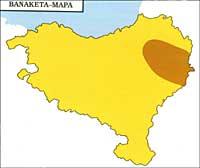
In the higher areas, and due to their geographical, topographical and climatic peculiarities, living conditions can change drastically and therefore its inhabitants. Therefore, the harsh climatic conditions of these areas make the high mountains a real natural barrier for the expansion of different living beings. But, at the same time, they exercise the role of refuge for others, and there are many species that, as a result of the changes produced in their places of origin, have had to hide in their families.
The pyrenean triton ( Euproctus asper) is an interesting amphibian that inhabits the rivers and streams of the Pyrenees, and that, due to its anatomy, physiology and adaptations, is considered as the model of the tritons that inhabit gladitions throughout Europe.
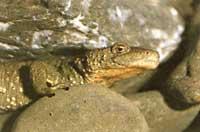
As gladiations ceased and the climate became temperate, animals adapted to live in those cold times had to migrate. Some, the most mobile, headed north in search of the cold, and many sought refuge in the heights. The latter, and after being isolated in the heights, created new species in thousands of years. However, these species, on occasion, still present characteristics that recall their glacial origin. And that's what happens to the Pyrenean triton.
In fact, the Pyrenean Triton is a solid urodelo adapted to live in cold and fast rivers like those that happened in the glaciations. This amphibian can also be guessed in its anatomy as a rheophyll –current–, with a very flattened body and head, to counterpose the smallest possible surface of the water stream, and whose ends of the fingers are provided with an extension in the form of a black key, to better address the stones of the bottom. On the other hand, and in order to avoid buoyancy, the lungs are very reduced, so it is a special respiratory system of this animal, whose cutaneous breathing is the main way to meet your oxygen needs.
a.
The prevalence of skin breathing is closely related to the habitat in which the pyrenean triton lives. In fact, the water of the high, cold and fast races is consumed in oxygen, so skin breathing can be enough to meet the metabolic needs of this animal. In watertight and temperate waters the amount of oxygen is much lower, so this system is not enough to meet the metabolic demand of the animal. Therefore, pyrenean triton is a stenotherm amphibian, that is, with a narrow margin of tolerance to changes, which can only live in waters with temperatures below 15ºC. If the water reheats above this level, it may suffer slight summer rises and then plunges into the bottom of the deep wells until the temperature returns to previous levels.
This of course limits the dispersion capacity of the animal and establishes a strong link with the superiors. Therefore, in the Pyrenees, this triton can only be found between heights of 700 and 2500 m, although its optimal height is 2,000 meters.
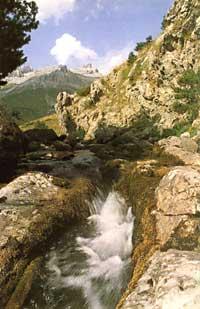
Despite its strong tolerance to the cold of pyrenean triton, when winter comes it leaves the water to hibernate, like the rest of amphibians. As soon as the ice starts, these animals hide under the stones or mosses of the river area, reducing metabolic activity to a minimum until the arrival of spring. The duration of hibernation varies greatly depending on the altitude at which the animal is located, but in the highest homes, at altitudes of about 2,500 m, it can be eight or nine months. At the end of spring and early summer, the Pyrenean tritons and the females, after the end of the hibernation, gather in the rivers of the high races to reproduce. These urodelos also have internal fertilization, but do not conform to the model of the tritons that reproduce in ponds.
On the contrary, to ensure fertilization in fast water, even if there is no real copla, a certain coupling has advantages. Therefore, the male willing to fertilize some female, is placed on a river edge where the current is not too large and waits with the tail tilted up. If another triton approaches enough, catch it with glue and teeth, jamming very well. If the captured triton is also male, after a short bow tie, each follows its path. But if it is female, while rubbing with the fingers of the hind legs, the male moves until the sewers touch. Immediately afterwards, it leaves a spermatoforum between the crisp lips and, pushing them with the hind legs, makes it enter the inside of the female sewer. This coupling can last a few hours and during that time the male releases about four spermatoforums, repeating the process repeatedly.
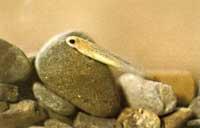
The laying takes place during the months of July and August. The female, using the ovipositor organ formed by the crocal lips, sticks the eggs individually in the recesses or sections of rock, choosing for it the most hidden slits. Thus, on the one hand, the water stream will not drag these eggs so easily and, on the other hand, they are also protected from enemies. These eggs are white yellow spheres of about 5 mm in diameter, covered by a lynched protective layer of about 2 mm thick.
Twenty or thirty days later, the embryo will reach its full development and the hatching of the larva will occur. These larvae usually have an initial length of 12 mm, but after a year of development they can reach about 5 cm. As in most urodelos, in the case of pyrenean triton the body of the larvae is usually elongated, the front legs develop before the rear and on both sides of the head are striking gills external to feathers.

These larvae, once the metamorphosis is over, will have to spend two more winters to reach sexual maturity, since the age of the triton will be three or four years. Therefore, considering that the average survival of the animal is usually around seven years, it should be noted that more than half of that time occurs in the form of larva.
But both the larvae and the adults, the pyrenean tritons are always magnificent predators that travel every day the underwater pavements in search of hunting. Its prey, especially molluscs – Bithynella, Limna, Ancylus, Pisidium... – crustaceans –ostracods and amphipods–, tricopters, efemeropters, plekopteros, dipteros and lumbricides. Also eggs and larvae of the same species; as in many other urodelos, in the case of pyrenean triton cannibalism is also common. On the other hand, trout is the most passionate enemy of pyrenean triton, and finding this amphibian in the rivers in which it is abundant is not so easy.
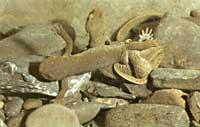
As for the distribution of the animal, the Pyrenean Triton, as its name suggests, is endemic in the Pyrenees and inhabits the rivers and streams located on the northern and southern slopes of this mountain range. The most abundant populations are in the center of the Pyrenees, and the southern limit of the range of the species is formed by the mountain ranges Guara, Riglos and Santo Domingo.
As for the Basque Country, we can find it on the border between Zuberoa and Navarra, and in the streams near this limit: Abaurrea in Goikoa, Mintxate, Belabartz, Iratin... the western population is Quinto Real.
Technical information |
SPECIES : Fulica atra Family : Rash ORDER : GRUIFORMES CLASS : Birds |





